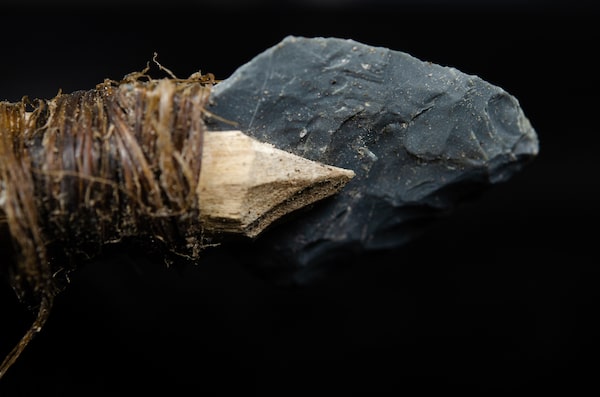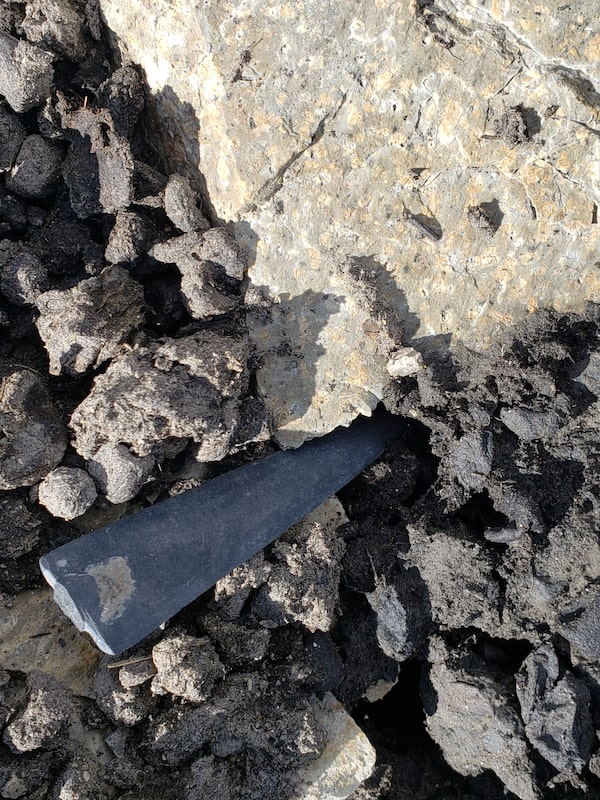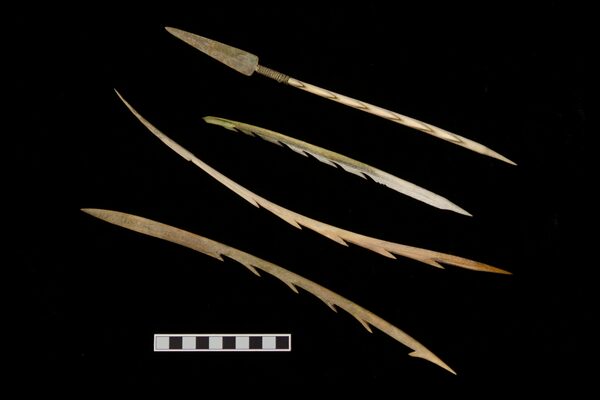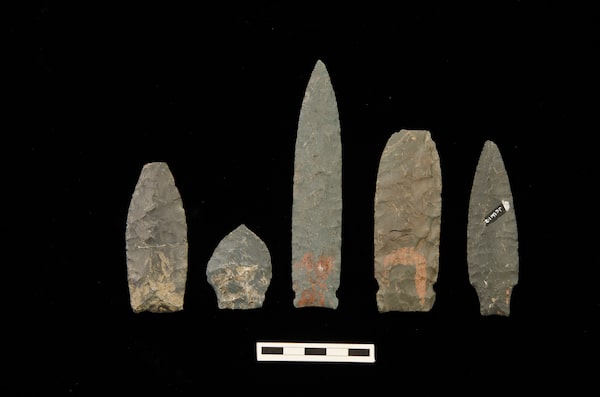
This two-metre-long throwing dart, made of birch wood and tied to a stone point, was freed from the ice in the overlapping traditional territories of the Kwanlin Dun and Carcross/Tagish peoples in the Yukon.Government of Yukon/Yukon government
A patch of ice on a mountainside quietly melts away. Out of the deep freeze emerges a fully intact wooden dart.
The dart, and the ice it was preserved in, are thousands of years old.
“When something comes out of the ice, maybe we only have weeks to find it in perfect condition,” says Christian Thomas, an archaeologist in the Yukon who spends part of his summer combing the mountains, near patches of melting ice.
Spurred by climate change, permanent ice patches are melting away at a staggering pace in Canada’s North, revealing hunting artifacts frozen in time.
The tools help shed light on how northern Indigenous communities lived hundreds and thousands of years ago.
But archaeologists and local First Nations are racing to keep up with the pace of the rapidly melting ice, trying to collect the artifacts before they degrade in the open air.
Permanent ice patches form high in some alpine climates. In Yukon and the Northwest Territories, for example, snow accumulates on the northern sides of some mountains, where, after years of buildup, it forms a permanent mass.
Unlike glaciers, which tend to shift and move, ice patches are static. Debris lost in glaciers tends to get crushed. Ice patches are more gentle, according to Glen MacKay, an archaeologist working for the government of the Northwest Territories.
They play an important role in the subarctic ecosystem, he says. Caribou seek out cool areas in the hot summer months; they stand atop the ice patches in search of relief from insects and the baking sun.
The caribou are predictable. Native hunters have been exploiting their behaviour for millennia, approaching from the southern side of the mountains, rounding the crest and throwing spears, firing arrows or launching darts. Sometimes they discarded the tools which became embedded in the ice, as if in a freezer.
The Gladstone ice patch is the largest in the southern Yukon. It lies on the territory of the Champagne and Aishihik First Nations.Yukon Government Photograph/Yukon government

In another ice patch, this slate blade, part of a hunting arrow, was found with spruce-resin glue still attached. It is estimated to be 600 years old.Jen Herkes/Handout
In 1997, in Yukon, a hunter making his way through the high alpine smelled caribou dung; not an uncommon scent in some parts of the mountains. Caribou, however, hadn’t lived in this part of the Rockies for decades. The smell drew him to a patch of ice in the mountains, around which a dark ring of caribou dung was being revealed by the melting snow. On the ground, he spotted a piece of wood emerging from the ice. Scientists tested it, and found it was 4,500 years old.
“Something different was going on here because wood does not just preserve in a subarctic climate for that long. We realized we were dealing with an interesting phenomenon.” Mr. Thomas says. He was an intern with the territorial government at the time and now runs the ice-patch-monitoring program in Yukon.
He and his colleagues began studying ice patches: surveying the landscape looking for other ancient buildups. They found dozens of sites that were hundreds and thousands of years old. Mr. Mackay, in the neighbouring Northwest Territories, also found a score of promising sites.
In the 20 or so years since they’ve been travelling to ice patches in the summer, combing the edges to see if anything had melted out, researchers and their First Nations partners have found a stunning collection of tools.
Among them: a 9,400-year-old, two-metre long, wooden spear; ancient arrows with intact feathers still attached to the shaft and one of the only completely intact atlatl spear throwers ever discovered in the world.
The tools have helped the researchers understand how Native hunters developed and used technology, but to the First Nations in the North, their importance is immeasurable.

Four composite caribou-antler arrowheads were discarded over the past 1,000 years before they were found again.Government of Yukon/Yukon government

Stone points for throwing darts, with spruce resin adhesives at their bases.Government of Yukon/Yukon government
Mr. Mackay brings these artifacts to schools in the region, where First Nations youth learn about how their ancestors lived.
It’s a vital part of their heritage, says Steve Smith, Chief of the Champagne and Aishihik First Nations in Yukon, one of many First Nations who have assisted with the ice-patch research. He feels a sense of connection to his ancestors when he sees the tools. “It is important for our young people to realize they are part of an 8,000-year-plus tradition of hunting in the mountains of our homelands,” he said in an e-mail. “We see these as the tools of our ancestors, not just artifacts."
The landscape of the North, however, is changing, Mr. Smith says. Fast.
In 2009, Mr. Mackay took a sample of an ice patch called KhTe-2: it was more than 300 metres long and a metre thick. The ice was more than 3,000 years old. Two years later, it was gone: nothing but a dark streak of compressed caribou dung across the mountainside. Dozens of other ice patches have gone the same way. When they melt, the artifacts within are left in the open. They rot, fall apart and are blown away by mountain winds. The dung left by generations of caribou who stood atop the ice is compressed together, depriving researchers of valuable layering that help them understand how the animals lived and what they ate at different times.
There aren’t enough researchers, or resources, to keep up with the rapidly changing landscapes, the scientists warn. Ice patches melt. Artifacts are lost. In 20 or 30 years, there may not be permanent ice patches in the North.
“I just know we’re losing and are going to lose significant and irreplaceable archaeological sites," Mr. Mackay says. “Some of those, we’ll never even know they were there.”
Our Morning Update and Evening Update newsletters are written by Globe editors, giving you a concise summary of the day’s most important headlines. Sign up today.